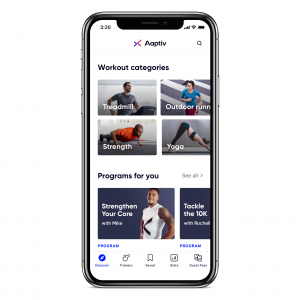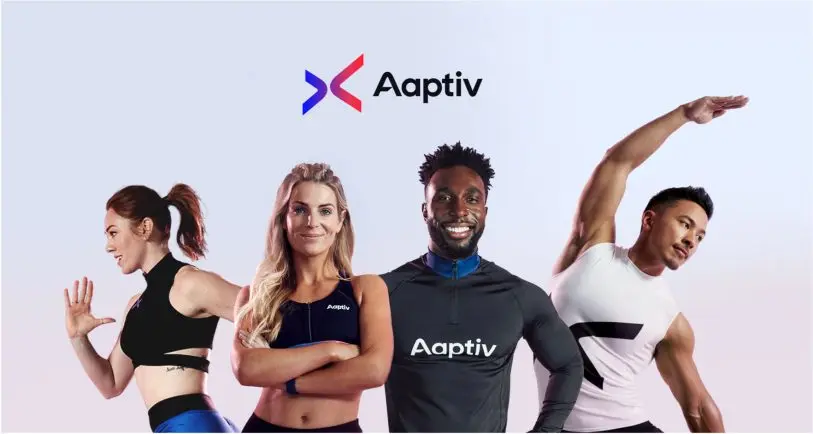Dubbed the “Spotify of fitness,” Aaptiv allows users to stream 2,500 guided audio-fitness classes for nearly every modality, including running, yoga, cycling, boxing, and even meditation and stretching. On average, 30,000 Aaptiv classes are taken each day.
Now, the popular app intends to dominate the international market. On Monday, the three-year-old company announced it is available in 20 countries. This includes a large chunk of Europe (France, Spain, Norway, etc.) as well South America, Australia, Mexico, India, South Africa, and more. The expansion begins with its current English offerings, followed by localized editions in 2019.

“We have to localize it for each country,” CEO Ethan Agarwal tells Fast Company. “That’s the only way this is going to work. There’s such significantly different cultural elements across different countries as related to fitness.”
Audio-first platform
Several years ago, Agarwal was on the road four days a week. He was, at the time, working in finance and consulting, and the grueling business travel schedule made it increasingly difficult to shed the 40 pounds he put on in graduate school. Wherever he went, he attempted to find a fitness trainer, but it soon became too frustrating.
“It turned out that it was hard if I was in a major city–and if I was in a smaller city, it was basically impossible,” recalls Agarwal.
Boutique fitness studios often weren’t any easier: Many were booked well in advance or nowhere near his lodgings. Some didn’t offer the modality he was interested in. It was then he realized that a modern fitness regimen should be far more accessible.
“Having a trainer and having guidance shouldn’t be about, can you book a class in time before it sells out, or that I have to show up at a specific place at a specific time, or I have to use a credit system to get access to training,” says Agarwal, referencing popular platforms as such as ClassPass.
“I wanted to create a product that brought really high-quality training to a very large market. I wanted to build something that removed the barrier that most people experience when trying to get great training, and that barrier can be financial, accessibility, or that they don’t know what to do.”

Except Agarwal didn’t think video was the best medium for exercise. In fact, he thought it often makes for a lousy experience.
Take, for example, running, which is the country’s most popular workout—by far. SoulCycle might boast an impressive 300,000 members, but there are 40 million Americans who run regularly. They obviously aren’t looking at any screens while on the road.
“If I’m going to be building a product that works for the most number of people, I can’t ignore the largest demographic, which happens to be runners,” stresses Agarwal. “So we focus on audio, which is the best delivery mechanism for all of this content because it allows for freedom of movement. You’re not anchored–staring at a screen while you’re trying to work out.”
The same goes for yoga, for which practitioners bend themselves into a number of varying positions that don’t always permit the head to stare forward, or even upright. If you’re in downward dog, you can’t crane your neck to glimpse the next move; you need to rely on the audio for commandments.
As Agarwal says, “It’s not that it doesn’t help the experience–it actually makes it worse. You’re doing the pose wrong by looking up to see the screen.”

Aaptiv launched in early 2016 and is now the No. 1 audio fitness app on the iTunes App Store, with more than 200,000 members. There are more than 26 modalities and counting. Membership runs $14.99 per month or $99 for a year.
Each class melds instruction with hit music in the background, be it hip-hop, electronica, or any array of popular tunes. That means you can listen to Beyoncé as you’re told to perform a full minute of burpees in the luxury of your living room.
What separates Aaptiv from competitors–and solidifies its reputation as a respected fitness trainer–is its ability to give members a thorough program instead of just one-off classes. When members sign up, they answer a host of different questions meant to gauge their fitness and health goals, as well as preferences (indoor or outdoor, beginner or advanced, etc.).
They are then given a set list, if you will, of day-by-day classes to get them to where they want to be, often with a medley of different exercises. The variety of classes is imperative: To better compete in a marathon, for example, you need to also work on core strength.
Each time a member finishes a class, they are notified of which class to take next. Or if they do legs one day, they’ll be recommended to do core the next. Sometimes, though, the app might suggest a rest day.

Aaptiv also built a solid following around its trainers, who each boast a distinct style and personality (and, often, distinct musical artist preferences). Agarwal says he’s “very, very picky” about his fitness instructors, noting that in the last year the company received 4,000 applications. Only a few make the cut: Aaptiv has five full-time trainers, with another 17 on a part-time basis.
Pioneering forward
So far, the formula works well beyond what anyone might have predicted for audio fitness. Over 18 million of Aaptiv’s classes have been taken to date, and the young startup raised $50 million in funding in the last 20 months. Agarwal says customer retention rate and engagement speaks for itself: Aaptiv users work out three times as frequently as the average American who works out.
Currently, the majority of Aaptiv’s community skews female, college-educated, under 34, with household income around $100,000. Most already have a gym membership or boutique fitness regimen, notes Agarwal, but they find that Aaptiv serves as a worthwhile add-on–either to fill in for the days they don’t head to the gym, or because the experience trumps what they get in a live class.
As the health and wellness category continues to explode, the U.S. fitness market has swelled to more than $30 billion, with approximately 16% of the population holding a gym membership card, reports the International Health, Racquet & Sportsclub Association. But many consumers are contemplating taking the workout indoors with popular platforms such as Peloton.
A new report from user insights platform Alpha saw that 54% of Americans who work out at least once a month are interested in buying an at-home fitness system. Of those surveyed, 34% claimed they have “no room in their home or apartment” for the equipment, while 24% said the trendy systems were too expensive. Aaptiv, meanwhile, requires little to no equipment.
Aaptiv’s classes mostly see seasonal popularity, in that people prefer outdoor workout instruction in the summer and marathon training in the fall. More and more, the company is even starting to play with more niche and specialty categories, like maternity fitness.
Moving forward, Aaptiv is adamant about immersing itself in workout trends abroad and how they can best localize content in places like Australia, India, and Italy. Agarwal is confident that Aaptiv’s wide range of content (“everything under the sun,” he says) will prove itself useful as it enters the international market.
“We were the pioneers in this space,” says Agarwal. “We were the first ones to come out with it. We’ve been doing it longer than anyone else. As a result, we know how to build really high-quality audio classes–like this is our core product, our core functionality.”
Recognize your brand’s excellence by applying to this year’s Brands That Matter Awards before the early-rate deadline, May 3.
